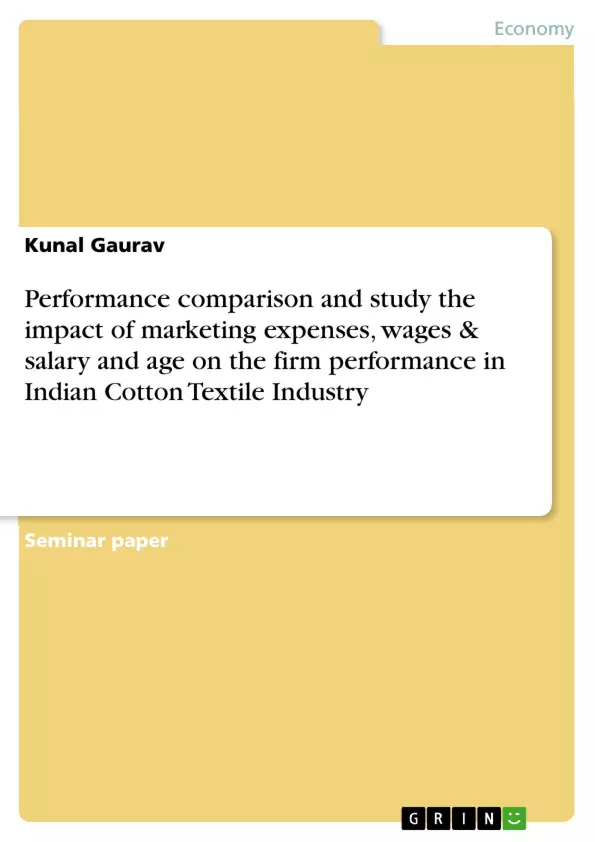India is the world’s third largest producer of cotton and second largest producer of cotton yarns and textiles. The Industry was de-licensed in 1991-92 and it lead to various structural changes in this industry. This study aims to compare the performance (in terms of return on capital employed) of firms incorporated before liberalization and firms incorporated after liberalization in Indian cotton textile industry. This study also intended to study the impact of marketing expenses, wages & salary and Age on explaining the variances in the firm performance (in terms of net sales of the firms) across various groups of the firms.
Inhaltsverzeichnis (Table of Contents)
- Abstract
- Introduction: Overview of the Indian Cotton Textile Industry
- Indian textile industry and Governmental Policy
- Current Scenario of the Industry
- Indian Cotton Textile Industry and Vision 2010
Zielsetzung und Themenschwerpunkte (Objectives and Key Themes)
This study aims to compare the performance (in terms of return on capital employed) of firms in the Indian cotton textile industry, differentiating between those incorporated before and after liberalization in 1991-92. It also investigates the impact of marketing expenses, wages & salaries, and firm age on explaining variations in firm performance (net sales).
- Performance comparison of firms in the Indian cotton textile industry before and after liberalization.
- Impact of marketing expenses on firm performance.
- Influence of wages and salaries on firm performance.
- Effect of firm age on firm performance.
- The role of government policy in shaping the Indian cotton textile industry.
Zusammenfassung der Kapitel (Chapter Summaries)
Abstract: Briefly introduces the study's objectives: comparing firm performance before and after liberalization and analyzing the impact of marketing expenses, wages & salaries, and age on firm performance in the Indian cotton textile industry.
Introduction: Overview of the Indian Cotton Textile Industry: Provides an overview of the Indian cotton textile industry's significance to the Indian economy, its global standing, and its employment generation. It discusses the impact of government policies, particularly the de-licensing in 1991-92 and the Textile Policy of 2000, on the industry's growth and development. The chapter also explores the current scenario of the industry post-MFA and the competitive landscape.
Schlüsselwörter (Keywords)
Indian cotton textile industry, firm performance, return on capital employed, marketing expenses, wages & salaries, firm age, liberalization, government policy, MFA, global competitiveness.
- Arbeit zitieren
- Prof. Kunal Gaurav (Autor:in), 2007, Performance comparison and study the impact of marketing expenses, wages & salary and age on the firm performance in Indian Cotton Textile Industry, München, GRIN Verlag, https://www.grin.com/document/187127



